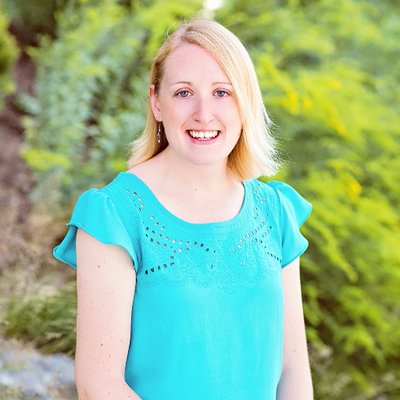In this #coachbetter episode, Kim chats with Margaret Powers, Director of STEAM Innovation in an independent school outside of Philadelphia. They talk about the unique structure of the innovation team at her school, including their distributed leadership model. They also discuss, in-depth, the Legacy Through Leadership program that the Innovation Team designed to build capacity through peer coaching and mentoring! If you are looking for sustainable models to engage teachers in professional growth that create lasting change in an organization, this episode is for you!
Subscribe to #coachbetter via your favorite Podcast Player!
Featured Guest

Bonus! Watch the Spotlight Version on YouTube!
Show Notes
Guest Information
Margaret Powers, Director of STEAM Innovation, Independent school outside of Philadelphia
Passion for early childhood education. Studied and lived in Regio Emilia (Italy). Masters in International training in Education. Using tech as a powerful tool to connect kids and teachers across the world. Have been working in independent schools
Tell us about your job and how it’s structured so we can learn a little bit about how your school works
One of the best things in life is when you come up with an idea and then you manifest it for yourself. I was co-presenting at SXSW and presented about STEAM Innovation Director and the job was created. Not just a single position. In a lot of my work, I have been in a silo, but on my own within my school. In this scenario, I’m part of a team of 3. We oversee professional development, working with teachers, coaching, big projects.
Distributed leadership. No team leader. We all work equally to collaborate and share our strengths and challenges, talking across our three divisions. Work across all divisions. Able to keep a pulse on the big issues, challenges, areas of growth and excitement across all of them and bring those teachers together.
Director of Humanities Innovation, Director of Lower School Innovation. Go to divisional meetings to ensure that things happen.
How do the logistics work in terms of hierarchy?
Tons of communication and collaboration, Slack, Asana, constant back and forth between the 3 of us. How do we make sure things don’t fall through the cracks. Allows us to look more broadly at bigger, long term goals. We all report to Assistant HOS who overseas PD/Academic, meet with her once a week, and then meet with divisional leaders every other week. And then times with all leadership together.
Team environment is really energizing. Yes, and… We build on each other’s ideas. Better & deeper PBL.
Legacy Through Leadership Program: Coaching
E4 grant to support the program. Wanted to tie in values of learn, lead and live a legacy. Start with faculty, create a legacy through yoru leadership. Not just with your students, but also with the faculty. Become part of the program for a whole school year, mentorship with someone on the Innovation team: 6 facets: self exploration, teaching practice, you as a learner, feedback.
Workshops in the evening to give them a shared language and foundation to talk about their teaching practice. They have a thinking partner, who is a peer who is trained in instructional coaching, they run through 2 cycles in the school year.
Powerhouse combo: mentorship, peer coaching, workshops
Really renewing for participants. Cohort model. Small group of teachers, who are together in the same room a number of times throughout the year. Workshops to establish language and shared experiences, fun events too to build community to remember what it feels like to be a learner and take that perspective back to the classroom. Helps us stay present about what it’s like to be a student. Mentoring connections allow us to have good insight into what teachers are talking about. Each year there are themes that come out. Let’s weave this back into the PD we’re offering this year. By the end of the year, people in that program are hosting Pop Up PD. Short 5m talks on a PD. Over the years, growing group of people who have participated. Used to coaching, being observed, etc. Growing community of people who are passionate about learning.
Grant to bring in a speaker / trainer. First year they were “fellows” and would be coaches the next few years. Subsequent years they are teachers leaders and receive the coaching from the other teachers.
Each teammate has 3-4 people to mentor, we meet every other week, adn follow their pathway through out the year. Program is 8-10 people in a cohort. Keep that number consistent so it feels like a tight group and relationships are the focus.
Selection process: Rubric to determine applicants, distribute across divisions and disciplines, feedback from divisional leaders.
Team are “joy bringers”; We strive to bring the joy, through snacks, music. Something really critical in teaching. Exhausting profession if you don’t find ways to spark joy.
Coaching relationships: thinking partnerships are not discipline or grade level specific. Does it matter if my coach isn’t in my discipline?It’s so powerful when you have a partnership when that’s not the case. I don’t even know your content, but I can provide feedback on your pedagogical practice. Have an exciting, deep discussion about teaching and learning. In a coaching relationship that can be really powerful, when you’re not connected to the content, so you can focus on teaching and learning.
Workshops are on a day when there is normally a school meeting day (so it’s already blocked off on your schedule). 1 workshop of the year, the teachers get cover for a ½ day. Whatever they’re working on with their coaching relationship and goals with us, are directly aligned to their professional path. Theory and hope is that whatever we’re spending time on together is things they would have already spent time on their own, we’re just making it easier.
Curiosity, does it make sense for me in X discipline or grade level. What if I’m not “ready”? We have people at the end of every year talking about what it was like being in the program.
It’s opt -in, not a required program. We had to be really patient, in the first year, we wanted to change everything, but we had to pace ourselves. But it’s really changed the school over time. Go with the ebb and flow of the school.
How do we tweak and adjust the content. Being able to plan out the workshops that we’re offering to be relevant as to where the school is going, where the school as community of learners is going. Who are our next round of our peer coaches (sustainability). How do you build into your plan, ways to make it adaptable and sustainable. How do you carve out the time in your own schedule: not jsut the actual meetings, but the prep for those. How do you stay engaged in being prepared.
Whenever I can make technology work for me, that’s something I love.
Recurring reminder on Slack: what worked well, what was challenging, what do you want to improve for next week, what are you looking forward to? Channels on Slack to keep things organized.
Calendars color-coded to see what I have next (Coaching, PD, Makerspace) so I can see at a glance what my brain is doing next.
Asana to assign tasks to myself, or to my colleagues. Life is busy, so I need tech to do that work for me. Frees up my brain for deeper reflection and thinking






Recent Comments